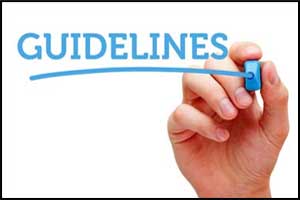- Home
- Editorial
- News
- Practice Guidelines
- Anesthesiology Guidelines
- Cancer Guidelines
- Cardiac Sciences Guidelines
- Critical Care Guidelines
- Dentistry Guidelines
- Dermatology Guidelines
- Diabetes and Endo Guidelines
- Diagnostics Guidelines
- ENT Guidelines
- Featured Practice Guidelines
- Gastroenterology Guidelines
- Geriatrics Guidelines
- Medicine Guidelines
- Nephrology Guidelines
- Neurosciences Guidelines
- Obs and Gynae Guidelines
- Ophthalmology Guidelines
- Orthopaedics Guidelines
- Paediatrics Guidelines
- Psychiatry Guidelines
- Pulmonology Guidelines
- Radiology Guidelines
- Surgery Guidelines
- Urology Guidelines
AAOS releases new guideline for managing acute compartment syndrome

ROSEMONT, Ill.- The American Academy of Orthopaedic Surgeons (AAOS) has released new Clinical Practice Guideline to help physicians diagnose and treat adult patients with traumatic injuries at risk for acute compartment syndrome (ACS).
Acute compartment syndrome usually develops after a severe injury, such as a car accident or broken bone. Swelling or bleeding can occur within a limb compartment containing muscles, nerves, and blood vessels. Disrupting the flow of blood, oxygen and nutrients to the arms, legs, hands, feet and buttocks can damage nerve and muscle cells. It also can cause permanent disability and tissue death.
Development of this CPG was a collaborative effort between a volunteer workgroup of musculoskeletal trauma surgery experts, military surgeons and AAOS research staff—part of the Major Extremity Trauma and Rehabilitation Consortium. The workgroup used a standardized, rigorous approach and considered over 10,000 published studies on the management of acute compartment syndrome of the upper or lower extremity in adults.
“There is no strong literature to support any specific approach to the diagnosis and management of ACS. Clinicians need to remain vigilant for the onset of ACS in any patient presenting with limb swelling and be prepared to act immediately when the clinical situation demands,” says Andrew Schmidt, MD, Chief of the Department of Orthopedics at Hennepin Healthcare in Minneapolis, and Co-chair of the guideline workgroup. “In the absence of any sort of evidence-based standards, any and all clinical decisions regarding assessment and/or treatment of presumed ACS should be carefully documented in the patient’s medical record.”
CPG highlights include:
- limited evidence for the effectiveness of a reliable clinical, physical exam;
- moderate evidence that continuous or repeated compartment pressure measurements assist in the diagnosis of ACS when using a perfusion pressure of less than 30 mmHg;
- there are no specific evidence-based recommendations that can be made for any particular method of compartment pressure measurement. Laboratory biomarkers remain unproven in discerning ACS from other causes of muscle injury; and,
- fasciotomy, or surgical release of the involved compartments, needs to be done in a manner that results in complete decompression of the affected compartment. However, the CPG workgroup does not recommend performing fasciotomy in late-stage ACS when there is evidence of irreversible muscle and nerve damage in the extremity.
CPGs recommend accepted approaches to treatment and/or diagnosis, and are not intended to be a fixed protocol for treatment or diagnosis. Patient care and treatment should always be based on a clinician’s independent medical judgment, giving the individual patient’s specific clinical circumstances.
For more details click on the link: newsroom.aaos.org

Disclaimer: This site is primarily intended for healthcare professionals. Any content/information on this website does not replace the advice of medical and/or health professionals and should not be construed as medical/diagnostic advice/endorsement or prescription. Use of this site is subject to our terms of use, privacy policy, advertisement policy. © 2020 Minerva Medical Treatment Pvt Ltd